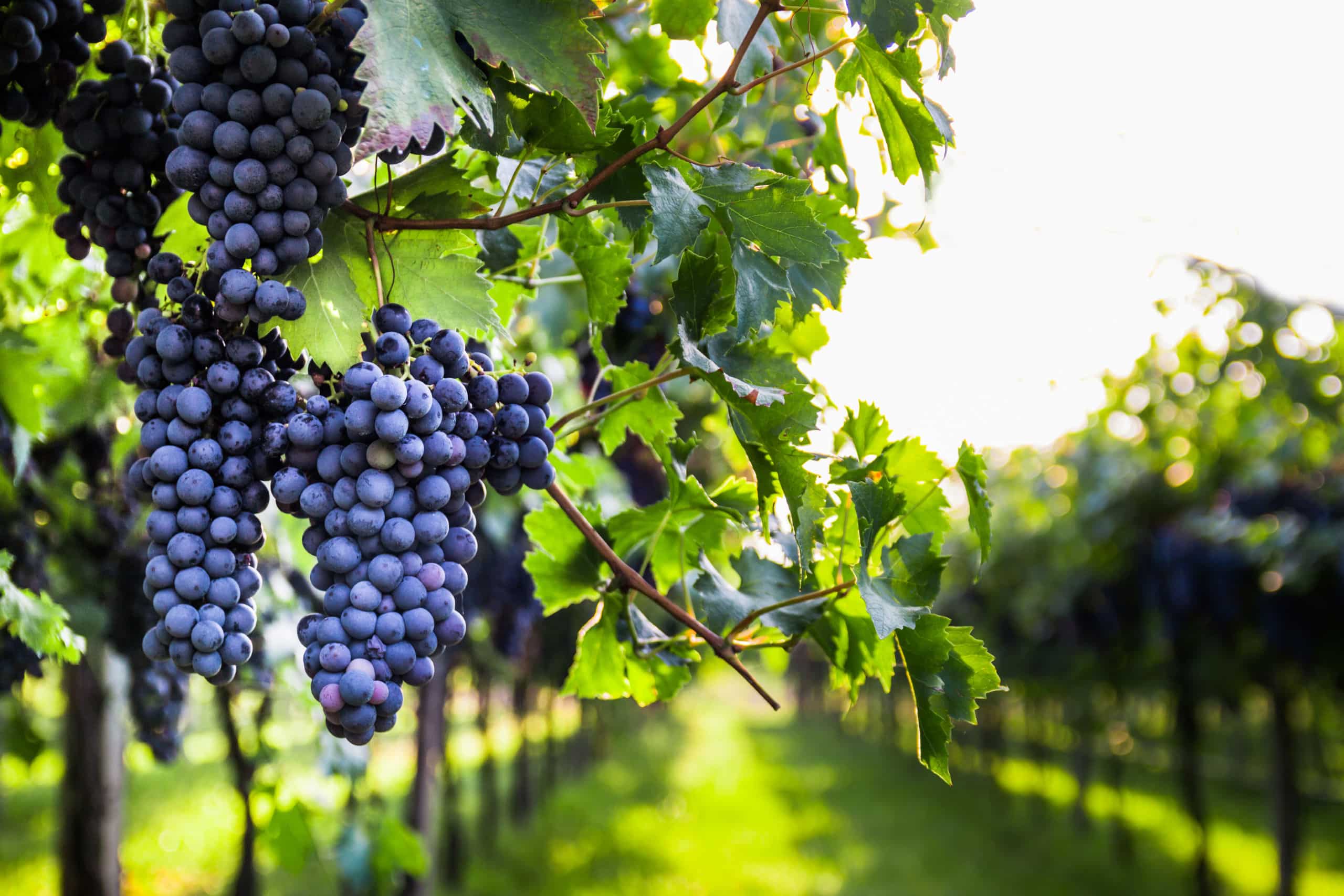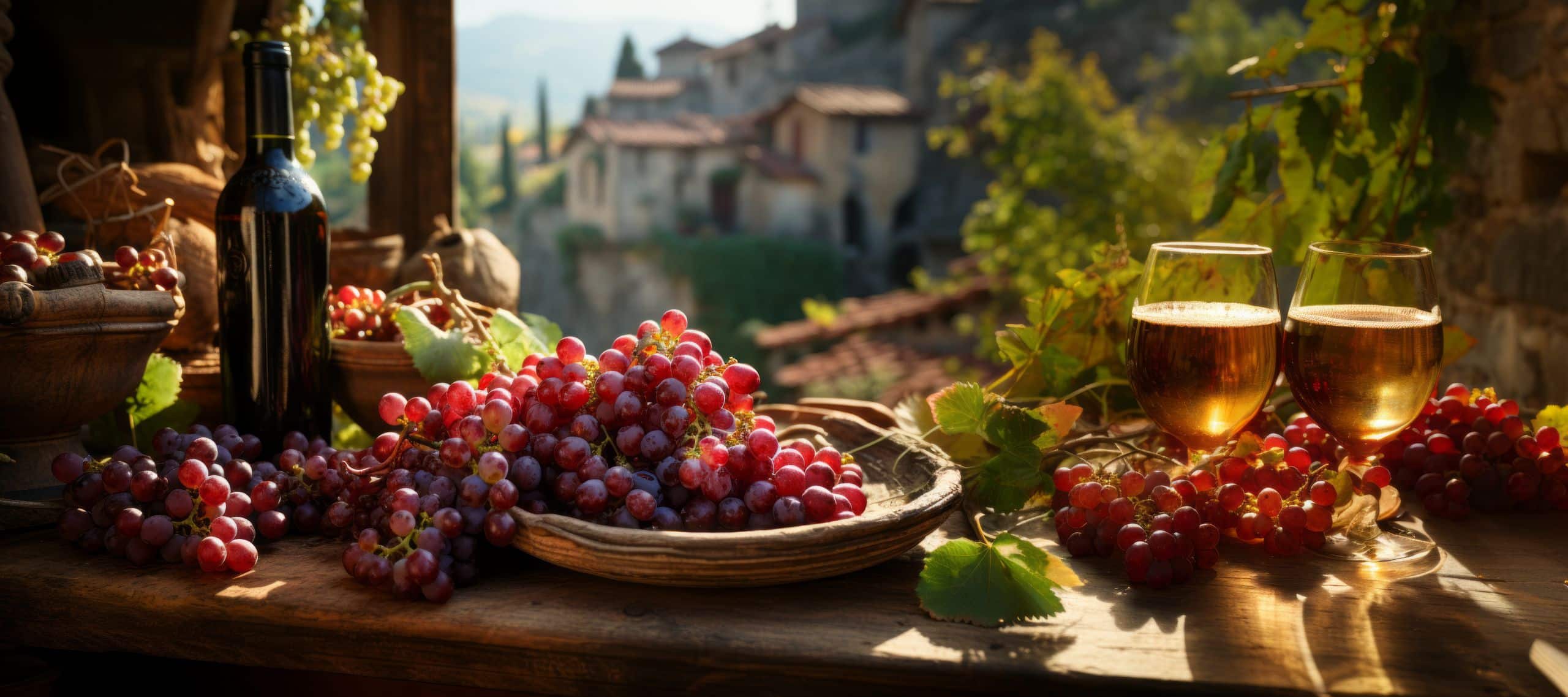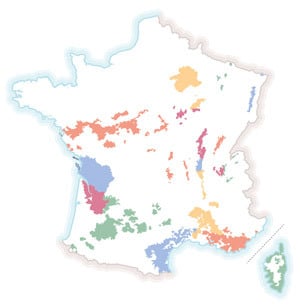
Contents
The topology of climates in France
Overall, France is subject to several types of climate:
- Mediterranean climate. It is rather warm and characterized by mild winters.
- Temperate climate. Its winters are cold and its summers are hot, but the temperature variations are not very wide. It includes several variants:
- Oceanic climate: mild summers and winters.
- Transitional climate: cool winters and hot summers.
- Semi-continental climate: cold winters and hot summers.
- Mountain climate: fairly cold winters and cool summers.
Next, we can distinguish between macroclimate, mesoclimate and microclimate.
The macroclimate corresponds to the regional climate and applies to a rather vast region such as Bordeaux, Champagne or Alsace.
The mesoclimate corresponds to the local climate and concerns an extended wine-growing region, a group of slopes with the same orientation, or a set of plots with common characteristics within a region.
The microclimate concerns an even smaller area, such as a plot closer to a watercourse, copses or a hill, giving it special thermal conditions.
Weather influences wine taste
Studies of the wines’ taste and organoleptic qualities, as well as scientific and agronomic analysis of terroirs and climate, have revealed a relationship between climate and harvest quality, and therefore the taste of the wines.
The role of sunshine
The sun’s rays enable photosynthesis, i.e. the synthesis of sugar by the leaves. The sunnier the climate, the richer the wine in polyphenols and the more aromatic the berries, but there’s a limit.
For example, vines planted on south and southeast-facing slopes produce sweeter, less acidic wines as the grapes ripen better.
The role of temperature
Photosynthesis is disrupted when the temperature is not between 10° and 35°. On average, the vine’s vegetative cycle varies between 13° (Alsace-Lorraine) and 18.5° (Southern Rhône Valley). Depending on temperatures, the choice of grape variety planted will be more or less judicious, and depends in particular on its earliness in terms of ripeness.
In cooler climates, for example, we find Riesling (white) or Pinot Noir (red). In temperate climates, we find Semillon or Sauvignon (white) and Merlot (red). In warmer climates, for example, we find Malbec and Syrah (red).
Researchers have even drawn up a table showing the thermal potential of different wine-growing areas.
The impact of rainfall and water supply on vines
On average, vines need between 400mm and 600mm of rain per year. During flowering and ripening, rain has an impact on yield, and during harvest, it conditions the concentration of reducing sugars. If there is too much water, ripening is not optimal. Above all, the vines need warmth during this phase.
Throughout the vegetative cycle, the water supply must be regular and not too abundant, otherwise photosynthesis is not optimal and the grapes produced do not ripen properly (too weak, grapes too light and therefore not sweet enough if there is not enough water, and vice versa if there is too much water). To a certain extent, the greater the water supply, the more sugars are formed through photosynthesis, which feed the berries and produce more complex wines.
Soil composition is of particular importance here. In a dry climate, we need soils and subsoils that can act as major water reserves. With a rainy climate, soils need to be drained.
So there will be a balance between the root network and the level of accessibility to water reserves:
- Clay soils are poorly aerated, so roots remain on the surface at a depth of less than a meter. The water is strongly retained and feeds the vines well in dry periods; in rainy periods, the supply is not excessive because the roots are not numerous and when it rains, the clay swells and the water runs off the surface.
- Calcareous and asteriated soils regulate water supply by storing it and releasing it to the roots in dry periods, and by having rapid drainage properties in periods of heavy rain.
- Soils on gravelly-sandy alluvium contain little clay and retain water poorly, but the roots sink much deeper (3 to 7 meters) and the vines resist drought well. The soils are highly impermeable during periods of heavy rainfall.
The impact of winds
The wind dries out and ventilates the vines. In this way, they regulate and protect against certain vine diseases.
The importance of vintage explained
As we’ve seen, climate has a major impact on the quality of the grapes harvested and therefore on the organoleptic characteristics of the wine. Each year has different climatic conditions, so it’s easy to understand the importance of the vintage when talking about a wine. Due to variations in climate (rain, frost, sun, heat), each vintage of a wine is characterized by differences in reducing sugar content, acidity, anthocyanins (pigments that affect the wine’s color), polyphenols (chemical compounds that affect the wine’s taste, color and mouthfeel), yields…
Photo by Joaquim Pittet / Unsplash




